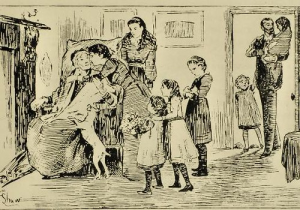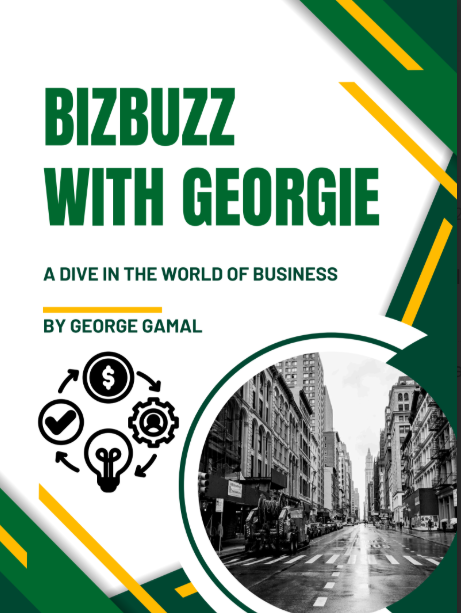Mysteries, Oddities, and Everything Strange: Dancing Plague
March 24, 2023
Dancing Plague: Don’t Stop the Music
Everyone loves to dance when they hear a groovy song. “Dancing Queen”? “Shut Up and Dance”? “Uptown Funk”? These melodies don’t have these terms in their titles for no reason. Dancing is a strange phenomenon where a good tune will get us up and out of our seats, flinging our limbs anywhere and everywhere. Some have even been able to make a career out of it! Abby Lee Miller screamed at children because dancing was just such a big part of her life. But what happens when you can’t stop? What happens when a large group of people in your town breaks out in dance, and you just can’t help but jump in? This was what occurred in 1518, known in history as the Dancing Plague.
 What even is a dancing plague? Plagues are usually denominated as diseases like the Black Death and COVID-19 that spread rapidly and leave the sufferer with a cough or a stuffy nose. Well, the citizens of Strasbourg in the Holy Roman Empire (now France) would beg to differ. In the 16th century, Frau Troffea was out on a pleasant stroll in the middle of July. She then entered the middle of the street and began dancing unexpectedly. It might have seemed strange to onlookers, but the strangest part of the event was that she kept doing it—for two months straight. She kept going until she was unable to and passed out due to exhaustion. After she had recovered and rested, she got back up and kept going.
What even is a dancing plague? Plagues are usually denominated as diseases like the Black Death and COVID-19 that spread rapidly and leave the sufferer with a cough or a stuffy nose. Well, the citizens of Strasbourg in the Holy Roman Empire (now France) would beg to differ. In the 16th century, Frau Troffea was out on a pleasant stroll in the middle of July. She then entered the middle of the street and began dancing unexpectedly. It might have seemed strange to onlookers, but the strangest part of the event was that she kept doing it—for two months straight. She kept going until she was unable to and passed out due to exhaustion. After she had recovered and rested, she got back up and kept going.
Not only that, she recruited others into her imaginary dance party. She had thirty other people join her, three in the first week, before the city officials were notified of the phenomenon. At this point, many had injured themselves or done serious damage through their non-stop moves. Surprisingly, the authorities believed the only cure was to encourage the dancing, so they hired dancers and musicians alike to join the festivities. They believed that the cause was none other than a bodily disease, so in order to ward it off they constructed a stage.
 To their dismay, this only continued the dance breakout, and at its peak, 400 people were involved in the crisis. In September, two months later, the dancers were forcefully removed from their location and brought to a shrine nearby to pray for a solution. Dancers had danced themselves to death, suffering from exhaustion, strokes, and heart attacks throughout. Doctors and other medicinal professionals claimed it was a result of “hot blood,” but there was little to no evidence to back up the claim whatsoever. The origin of Troffea’s dance fever was a complete and utter mystery.
To their dismay, this only continued the dance breakout, and at its peak, 400 people were involved in the crisis. In September, two months later, the dancers were forcefully removed from their location and brought to a shrine nearby to pray for a solution. Dancers had danced themselves to death, suffering from exhaustion, strokes, and heart attacks throughout. Doctors and other medicinal professionals claimed it was a result of “hot blood,” but there was little to no evidence to back up the claim whatsoever. The origin of Troffea’s dance fever was a complete and utter mystery.
One of the craziest aspects of this plague was that it was not the only time it occurred. It was the most well detailed, but towns along the Rhine River were also subjected to the Dancing Plague. Between the years 900 and 1599, there were countless documented breakouts in Germany, Holland, Switzerland, and other locations in Medieval Europe. The Strasbourg Dancing Plague had the heaviest death toll, though, as some even believed fifteen people died per day from the unstoppable dancing.
 People like historian John Waller, who authored A Time to Dance, a Time to Die: The Extraordinary Story of the Dancing Plague of 1518, have been studying this tall tale for decades. But what could have possibly caused this hysteria? Waller suggests that St. Vitus, a saint that many Europeans worshiped, would have convinced the population that he cursed them with a dancing plague. It was also a stressful time period in Strasbourg, as the rumor of St. Vitus would have spread rapidly throughout the hungry and disease-ridden (smallpox and syphilis, specifically) town. This would have triggered a stress response that involved dancing maniacally. A psychogenic movement disorder involves reckless movement, which Waller believes is the term for the event.
People like historian John Waller, who authored A Time to Dance, a Time to Die: The Extraordinary Story of the Dancing Plague of 1518, have been studying this tall tale for decades. But what could have possibly caused this hysteria? Waller suggests that St. Vitus, a saint that many Europeans worshiped, would have convinced the population that he cursed them with a dancing plague. It was also a stressful time period in Strasbourg, as the rumor of St. Vitus would have spread rapidly throughout the hungry and disease-ridden (smallpox and syphilis, specifically) town. This would have triggered a stress response that involved dancing maniacally. A psychogenic movement disorder involves reckless movement, which Waller believes is the term for the event.
Some of the theories of the time involved “hot blood” or a demon. Other modern theories suggest the members could have been demonstrating a ritual for a religious cult. One of the most popular theories, however, comes from moldy bread. Rye bread in the town might have accidentally been contaminated with ergot fungi, containing ergotamine. This substance is also essential to the production of lysergic acid diethylamide (LSD). That’s right, the entire plague might have been a severe extended drug episode. It was known to create jerking movements that would be seen in movements like dancing.
Although it might not ever be concluded what occurred in Strasbourg in 1518, these events ceased in the Middle Ages and no known popular happenings have been documented anywhere else in the world. What is known, though, is that dancing is still an essential part of human existence and will not be disappearing anytime soon. Henceforth, though, it will remain in manageable chunks. Dance parties and raves will only last until everyone gets tired, and even stress or drugs won’t be able to replicate what happened to Mrs. Troffea.
Resources:
https://www.britannica.com/event/dancing-plague-of-1518
https://www.history.com/news/what-was-the-dancing-plague-of-1518















































